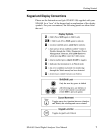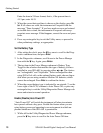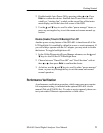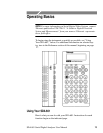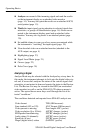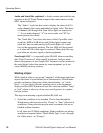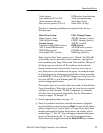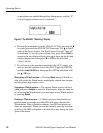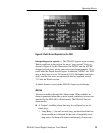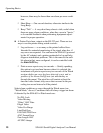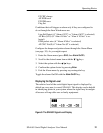
Operating Basics
14
SDA 601 Serial Digital Analyzer User Manual
H Analyze one second of the incoming signal and read the results
on the instrument display or an attached video monitor
(page 14). You may also print the results on an attached ASCII,
serial printer (page 15).
H Watch the input signal, paying attention to selected signal char-
acteristics, or groups of characteristics (page 16). Errors are re-
ported to the instrument display panel and an attached video
monitor. You may also log errors to an attached printer (page
20).
H Set audible alarms to warn you of any errors encountered while
the instrument is “watching” the input signal (page 19).
H View decoded video on an attached monitor (attached to the
AUX output, see page 4)
H Highlighting (page 23)
H Signal Level Meter (page 21)
H Cursors (page 22)
H Pulse Cross (page 24)
Analyzing a Signal
Analyze Mode may be selected with the Analyze key at any time. In
this mode, the instrument attempts to lock onto the digital video sig-
nal and, if successful, analyzes the status of the various signal char-
acteristics at one instant in time and reports the status to the Review
List. The Review List may be viewed on the OSD (on an attached
video monitor) as well as on the SDA 601 LCD when no menu is
active. The up and down arrow keys scroll through the list of de-
tected “conditions.”
The conditions detected and reported in an SDA 601 analysis are:
Video format TRS (OK/incorrect)
Line standard (625 or 525) ANC Format (OK/incorrect)
Video present or missing Zero length ANC (yes/no)
Video resolution (8 or 10 bits) APCRC changes (yes/no)
EDH packet found/missing FFCRC changes (yes/no)
Audio status (16 channels) APCRC errors (yes/no)
Stuck bits (if any) FFCRC errors (yes/no)
Illegal (digital word) values ØAPCRC (yes/no)




